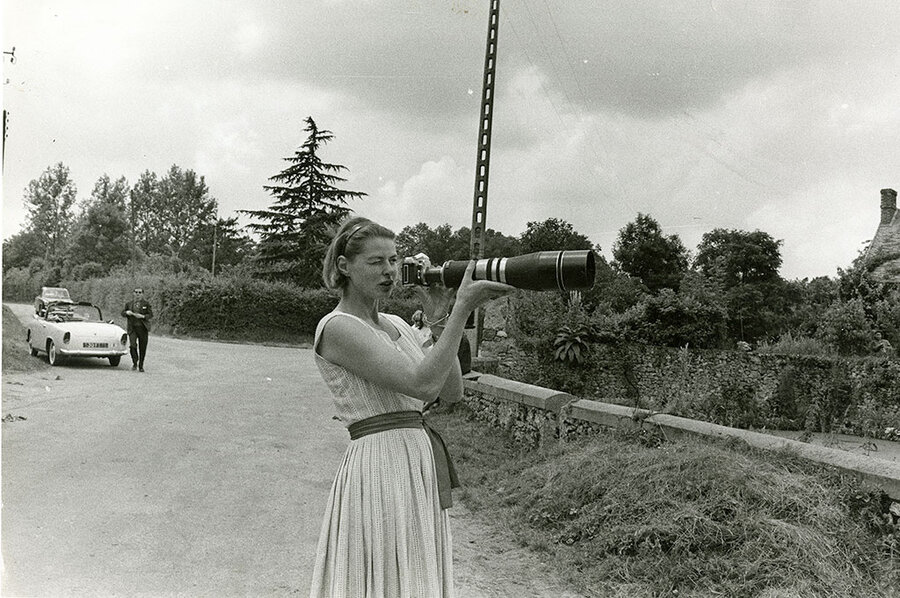'Ingrid Bergman: In Her Own Words' is a comprehensive portrait of the actress's life
Loading...
“I was the shyest creature in the world but I had a lion inside me that wouldn’t keep quiet.” This is a typical diary entry from one of the most iconic actresses in movie history as recounted in the aptly named documentary “Ingrid Bergman: In Her Own Words.”
It’s been a fascinating year for intimate documentaries about movie legends – earlier we had “Listen to Me Marlon,” which utilized hours of private tape recordings of Brando musing on his life and career. “Ingrid Bergman” draws on a lifetime of diary entries, home movies, notes, and letters to give us a comprehensive portrait of the actress mostly in her off-screen incarnation.
It was quite a life.
Bergman was a ravenous collector of her own mementos, and the film, directed by Stig Björkman and narrated (using Bergman’s words) by Swedish actress Alicia Vikander, is a treasure-trove of never-before-seen photos and footage. We see little Ingrid as a toddler in home movies, often filmed by her beloved father (who, like her mother, died when she was a child). As a young movie actress in Sweden, she had a radiance that caught the eye of producer David O. Selznick, who brought her to Hollywood in 1939, at the age of 24, to star in a remake of her Swedish hit “Intermezzo.”
She made more than a dozen films in the next jampacked 10 years, many of them starring opposite Hollywood’s reigning royalty: Gary Cooper (“For Whom the Bell Tolls” and “Saratoga Trunk”), Spencer Tracey (“Dr. Jekyll and Mr. Hyde”), Charles Boyer (“Gaslight,” for which she won the first of her three Oscars), Gregory Peck (“Spellbound”), Bing Crosby (“The Bells of St. Mary’s”), Cary Grant (“Notorious”), and, of course, Humphrey Bogart (“Casablanca”).
[Editor's note: The original version of this review misidentified the film version of "Dr. Jekyll and Mr. Hyde" in which Bergman starred.]
Bergman had always wanted to leave Sweden for Hollywood, and her almost instant fame there was, for her, like living out a dream. Besides being a gifted actress, she had a dualism – a combination of exoticism and fresh-faced innocence – that was a perfect fit for American audiences looking for something offshore and different. Although she could be flamingly enticing in movies like Hitchcock’s “Notorious,” she was erotic in a non-vampy way that, even at its most torrid, seemed pure-souled and, well, fun. (Her apartment scene pursuit of Grant in Hitchcock’s film is probably the funniest-sexiest seduction ever filmed.)
All this audience adoration came crashing down when she left her Swedish husband (and their young daughter, Pia) for Italian director Roberto Rossellini, whose gritty neorealist films, such as “Open City,” were greatly admired by Bergman and at the opposite end conceptually and stylistically from her Hollywood work. Several movies with Rossellini, and three children – all of whom, including the actress Isabella Rossellini, are interviewed in the documentary – came out of her marriage to the director.
The scandal, reeking with hypocrisy, that resulted from all this effectively ended her Hollywood career – she was even denounced on the floor of the Senate – until her triumphant return in “Anastasia” in 1956 and Oscar No. 2 for best actress. (The third came in 1974 for a supporting performance in “Murder on the Orient Express.”) As she recounts in a diary entry in the documentary, “I’ve gone from saint to whore to saint again all in one lifetime.”
The documentary is skimpy when it comes to assessing Bergman’s movies, but this was not its primary intent. Instead, we are given a view of the actress in all her free-spirited waywardness.
In her life she moved from Sweden to the United States to Italy to Paris to London, not always with her children in tow. The children sound more regretful than angry at not having had more time with her (she died in 1982 at age 67). She was, many of them say, more like a fun-filled friend than a traditional mother.
She had a steely will, even going up against Ingmar Bergman (no relation) in his interpretation of a scene from her last theatrical film, “Autumn Sonata,” which is probably also her greatest performance. (Ingmar won the argument.)
Despite her fantasy-fueled life, Bergman was a hard-bitten realist. The words of hers that resonate the most for me in this film: “Success is more dangerous than misfortune.” Grade: B+ (This film is not rated.)







